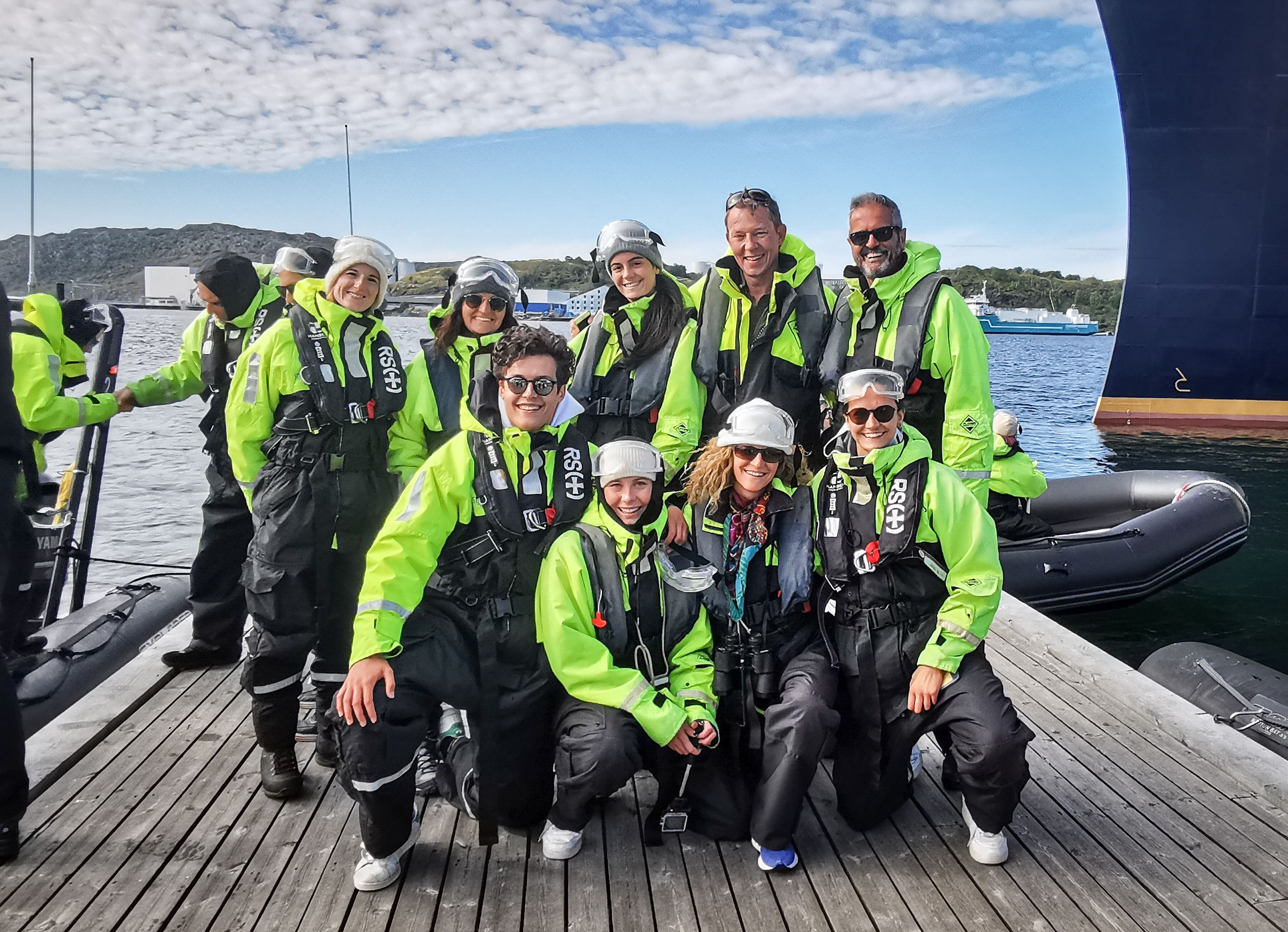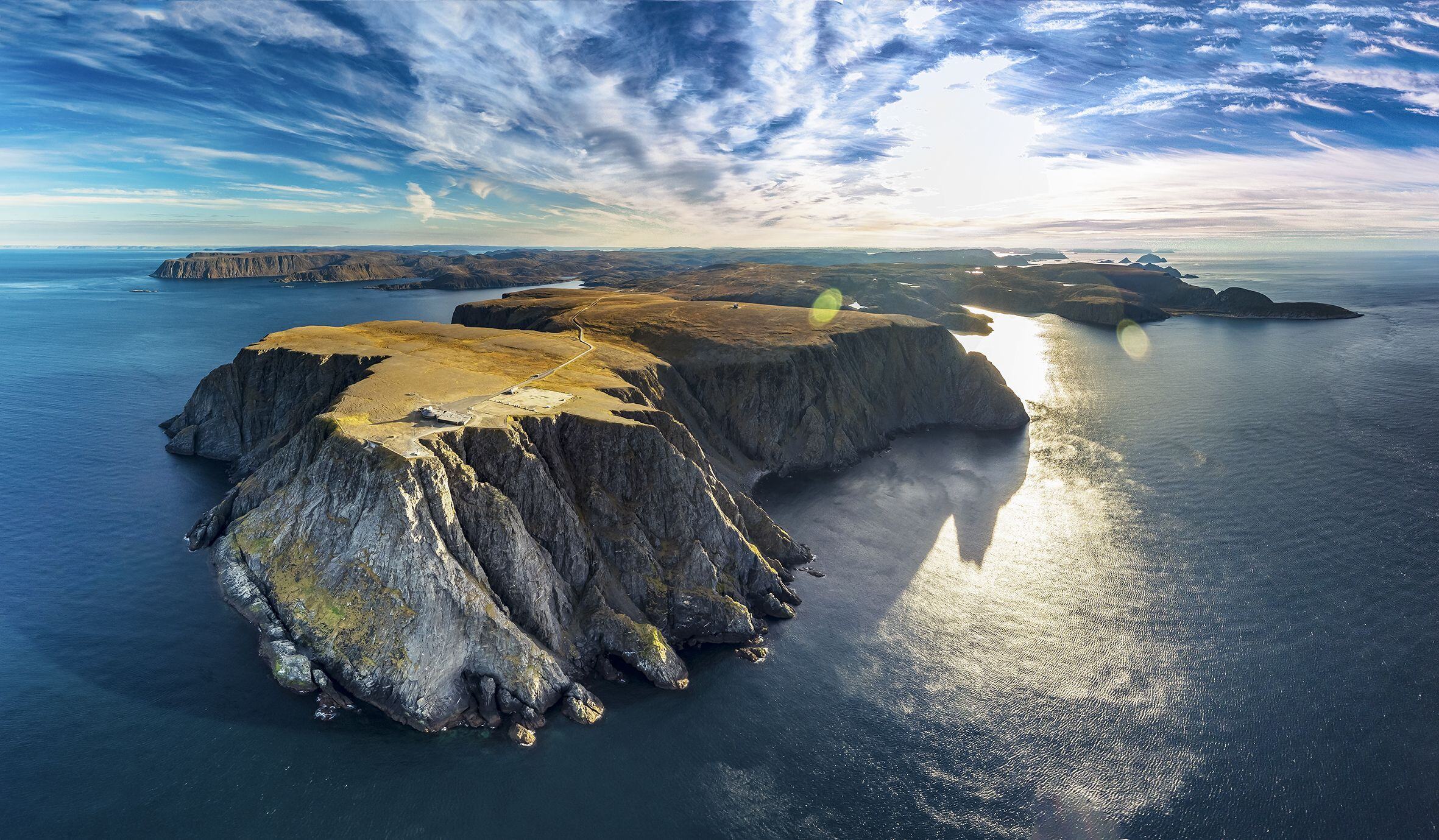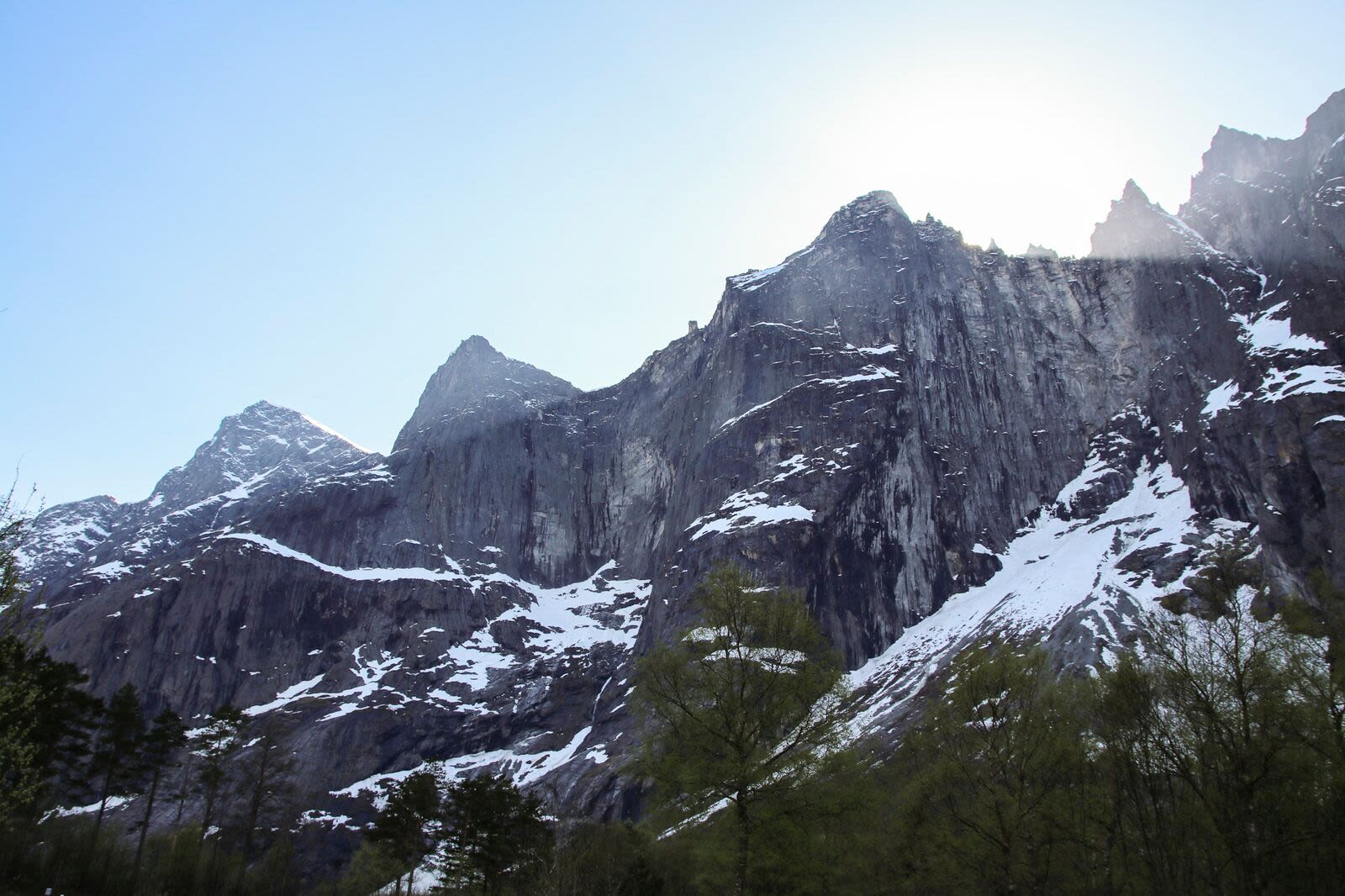Stella Polaris' RIB safari is ranked among the best excursions along the Norwegian coast. I now understand why - and it has nothing to do with the thrill of speed.
Stella Polaris' RIB safari is ranked among the best excursions along the Norwegian coast. I now understand why - and it has nothing to do with the thrill of speed.
The RIB Adventure
God morning, Norway
The sound of silence is about all I can hear on deck six. Only when I strain my ears, I can hear a faint electrical hum that I would never have noticed, had I gotten up an hour later when all the early birds head for breakfast. The time is 5:50 AM.
It’s the coffee machine making that hum. I push the start button and, in just a few seconds, delicious, freshly-ground coffee pours into my white Havila mug. I slip my index finger into the handle and carefully lift the cup, inhaling the morning scent before finding my way to the nearest table next to one of the Havila’s enormous floor-to-ceiling windows.
I forget the coffee, however, as the ship turns toward the harbor of Nesna. This tiny municipality in Nordland county lies on the coast of Helgeland. I feel the urge to go outside and take a closer look.
Far down beneath me, I spot a lone passenger car parked on the dock, its headlights still illuminated. In this early hour, it occurs to me that the driver is here only to watch our arrival. The sentimental value of these ships is huge.
Then, a small truck appears. The driver maneuvers his vehicle with pinpoint precision up the ship’s ramp and into its open hatch. In a matter of minutes, he exits with a load of brand-new windows, carefully taped together. The truck and windows soon disappear into the terminal, only to return with more goods to bring aboard the ship.
For nearly 130 years, Norwegian boats and shipping companies have sailed this route, connecting the whole country by transporting mail, goods, and people. With its new and more environmentally-friendly ships, Havila Voyages is continuing this vital and historic mission as an authorized shipping company by the Norwegian government.
As I savor my last drops of coffee, I mount the stairs to the two gyms on the seventh deck. But, once again, I’m drawn to the outside deck by a such a breathtaking view of the sunrise, the nature, the sea.
The RIB Safari
Seven hours later, I put on a flotation suit in a tent on the dock at the harbor of Bodø. I let a RIB driver tighten my life jacket before helping myself to some goggles from a box outside the tent. I wear my own hat to protect my ears from the wind.
Six inflatable boats moored along the small breakwater soon fill up with a dozen people in each one. I find myself sitting in the back with a family group of eight people from Italy and Germany, as well as three people from the UK. Our driver introduces himself as Henry Johnsen, and he will be taking us on a two-hour RIB (Rigid Inflatable Boats) safari to Salstraumen (The Salt Stream) and sea eagles.
According to Henry, this excursion, which is hosted by Stella Polaris AS, has been ranked as one of the best along the entire Norwegian coast. The reason has little to do with “speed and excitement”: For years Henry and the rest of the team at Stella Polaris have made a serious effort in developing content and guide scripts for these tours.
“Welcome to the Arctic,” Henry says, smiling broadly. “Do you know how far north we are right now?”
Most of us have realized that we are north of the Arctic Circle but cannot give a precise answer.
“Bodø is located at 67 degrees north, and is the first city in the Arctic. If it weren’t for the Gulf Stream (a warm ocean current originating in the Gulf of Mexico),everything we see here would have been covered in ice, and it would be impossible to live here”, Henry explains, while guiding the RIB out of the natural harbor along the “coastal highway” – or “national Highway No.1” as the sailing route along the Norwegian coast is often referred to – and past the 222-year-old coastal fort on Nyholmen, at the harbor entrance to Bodø.
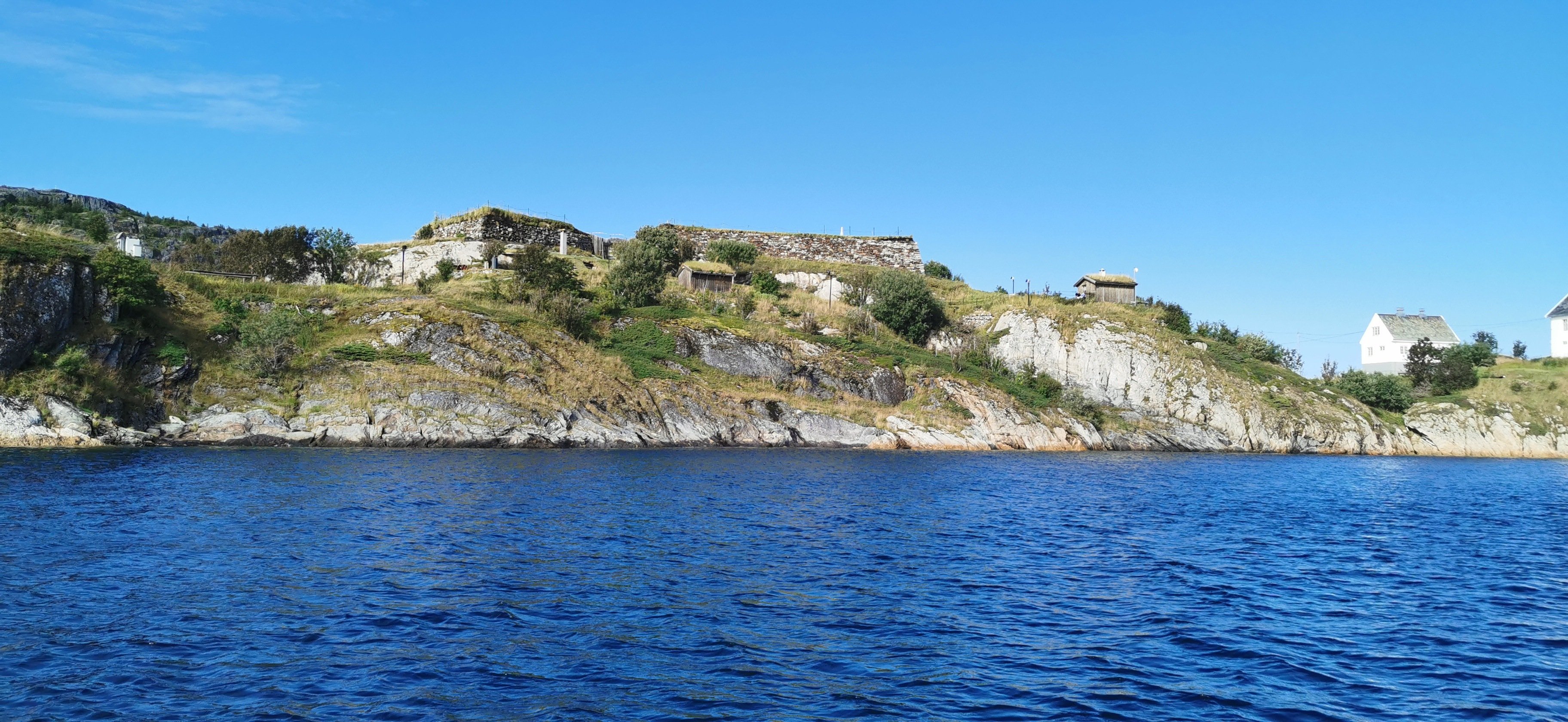
The coastal fort, Nyholmen.
From here, we have a good view of the city.
Photo: Daniel Vorndran CC-BY-SA (2015)
Henry continues: “Not only can we live here, but we can also grow a lot of food here – make large-scale productions and harvest the crops many times during the season.”
It’s all because of the midnight sun, he explains, when the sun never dips below the horizon at night – not once – for six weeks. Though in Bodø and the rest of the northern part of Norway, the midnight sun really lasts for three whole months during the summer.
“It is a scientific fact that the world’s sweetest strawberries grow here in Salten” (the district in which Bodo is located), Henry says.
The simple explanation is that when the sun never sets, photosynthesis is allowed to work for nearly twenty-four hours a day. If plants have access to light, water and temperatures at least at 4 degrees Celsius, they will grow – and the more sunlight, the sweeter they become.
The sunshine is absolutely delightful, as is the wind that hits my face, as the speed of the boat increases – up to 32 knots (37 mph). It’s almost tempting to close my eyes and just enjoy the feeling, but there is so much to see! The mountains, the islands, the fishermen.
Two men appearing to be in the 50s sit in front of me, chatting energetically to each other in Italian. They cheer eagerly every time we hit a wave and whenever the boat driver accelerates – and especially when it turns. At other times, we sit in calm waters, listening to the guide describing our surroundings.
“I was born and raised over there,” Henry suddenly says, pointing in the direction of an island with a high mountain. “Or, actually, I wasn’t born on the island, but on a fishing boat on the way to the hospital.”
The tourists laugh. However, it wasn’t entirely unusual for children to be born at sea when Henry grew up.
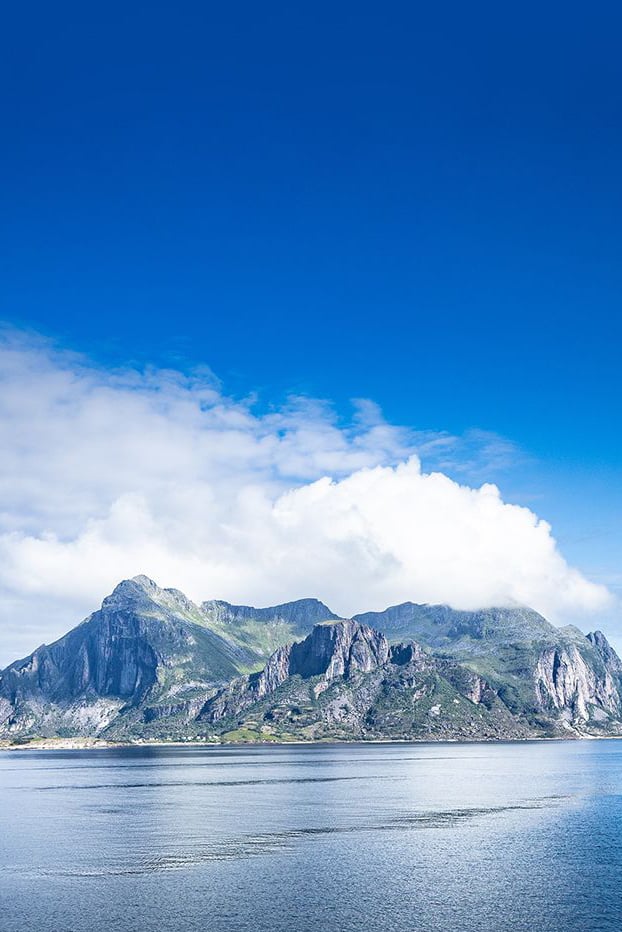
Later, he points to Fugleøya (The Bird Island), one of the very few nesting sites for puffins. The cute little birds arrive at the beginning of April and leave by the end of August.
Until January 2022, the Norwegian Air Force’s NATO home base, Quick Reaction Alert (QRA), was located in Bodo.
“During the Cold War, before the Soviet Union dissolved in 1991, we had many episodes in Bodo when our air force had to “show” Soviet aircraft out of Norwegian air territory,” Henry says.
He talks passionately about the so-called U-2 affair in 1960, when an American U-2 spy plane operating from Bodo was shot down while flying over Sverdlovsk. The pilot – an American named Frances Gary Powers – survived the attack. He was captured… and shown off on Soviet television. Eventually, Powers was exchanged for a Soviet spy and returned to the US.
In 2015, the story was embraced by Hollywood. The movie is “Bridge of Spies” and Tom Hanks plays the lead role.
Henry steers the RIB toward what, at first glance, looks like an ordinary cliff.
Up close, we see something quite different: A work of art painted by the forces of nature. The rocks appearing above the surface of the sea in front of us have a pattern reminiscent of the northern lights in the night sky. The rocks are so fascinating that geologists from far and wide come here to study them.
What we are seeing is simply a tiny window into the history of Norway’s geology.
“About 430 million years ago, the North American continent collided with ours. It resulted in the seabed folding up and being squeezed together, and creating a kind of soft sandstone,” Henry explains.
Millions of years later, the tectonic plates broke apart and separated into different continents.
Usually, we cannot see these formations because the ice ages scoured the mountains smooth. However, the winter storms and waves over several thousand years have washed away the outermost, smooth layer from the lower part of the cliff, turning this spot into a timeless wonder of history.
With the advent of warmer global temperatures about 18,000 years ago, the ice covering continent began to melt. 8,000 years later, the ice age was over. The dramatic changes caused glaciers to carve deep valleys in their paths as they gradually melted. Later on, as the seas rose, the valleys filled with water.
“Water-filled valleys are what we call fjords, and in Norway, we have many of them. The Sognefjord in the Vestland county, is the largest open fjord. It is also the world’s longest fjord in which it’s possible to navigate,” Henry says.
Do you know where the first people in Norway came from?” Henry asks.
When no one answers, he says that they came from “the bottom of the sea,” 11,700 years ago.
“We come from “Doggerland,” or more precisely, the bottom of the North Sea.” He is not joking. The sea level 10.000 years ago was much lower than it is today.
We are now cruising through a maelstrom ( a powerful whirlpool), but nothing like the one we will soon experience. Everyone is smiling enthusiastically.
“This is crazy! Absolutely crazy!” a man exults in English, laughing out loud.
“There’s a whole in the water!”
On the small islands around us, people are fishing, paying no attention to the RIBs racing by.
At last, we arrive at Saltstraumen (The Salt Stream) – the strongest tidal current in the entire world.
Here the eddies can become ten meters wide and five meters deep. It’s what happens when 400 million cubic meters of sea water pass through a 150 meter-wide and a narrow 3-kilometer-long strait at a speed of over 20 knots, crashing over an undersea mountain in the process – every six hours!
“Most of it hits the mountain top. When the water flows upwards, it crashes into the water that flows straight ahead, and then a whirlpool occurs,” Henry explains.
At the same time, the current swirls up algae and other snacks for marine animals, fish and birds. In this sense it’s not surprising that the area attracts many fishing tourists. But did you know that the site is also great for divers? National Geographic has selected The Saltstraum one of the world’s best destinations for cold water diving.
Sea eagles. We’ve seen several specimens of the magnificent animal already, but now Henry is slowing down in an area where he knows there’s an eagles’ nest.
We are lucky: Both mother and father eagles are at home and a young eagle is sitting in the nest. We get to see it up close.
“The sea eagle is Northern Europe’s largest bird of prey, with a wingspan of over 2.5 meters, and it can live up to 50 years. It eats nearly everything,” says Henry.
The baby eagle spreads its wings, flaps as if on command, and gives us a real show. But although it’s quite big, it doesn’t take off. It’s only three months old and has not yet learned to fly. What we are witnessing is just training.
Our time with Henry has flown by, and yet I feel a good deal wiser now than two hours ago.
On the dock, the Italian-German family in my boat asks if I want to join them in a group photo. I’m glad they ask, so I have a digital memento with me back home. Later, I learn that the group actually consists of not 8, but 11 family members spread through three generations.
A generational journey. That sounds exciting…
